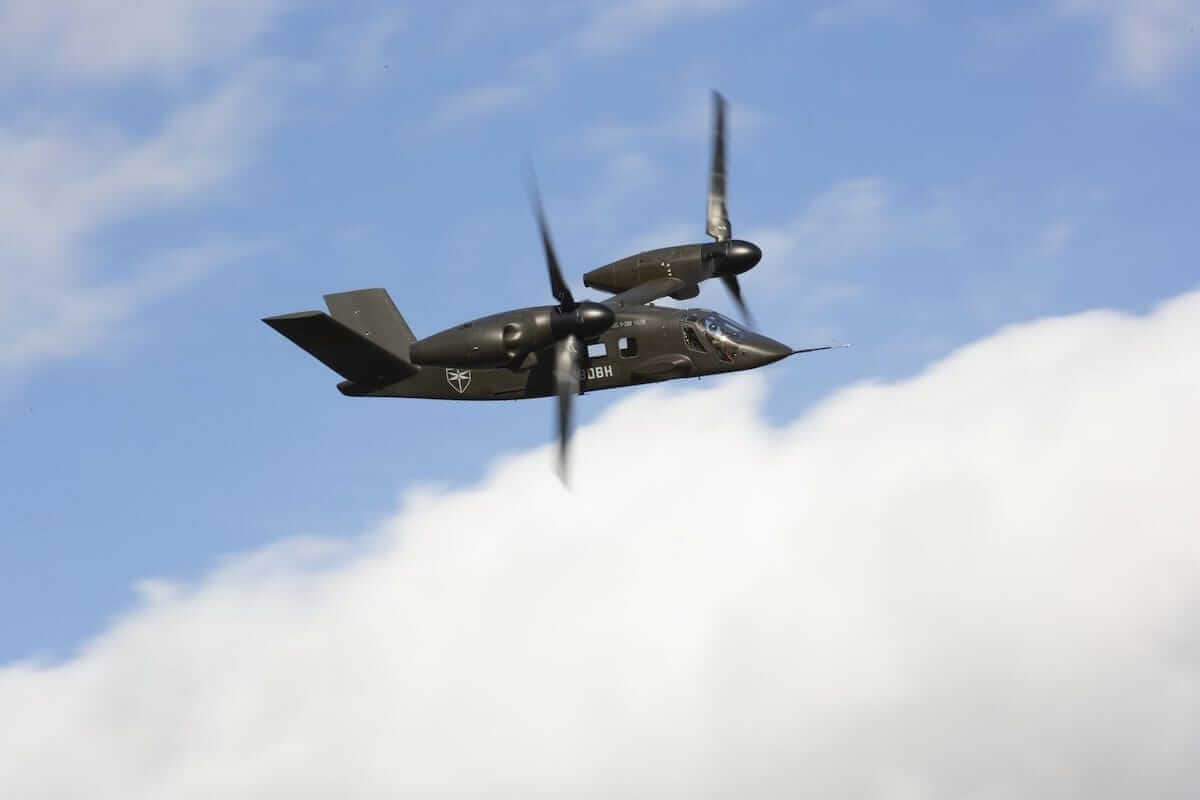In early 1944, with the fall of Italy and the establishment of the Italian Socialist Republic, the fascist redoubt defended by Nazi Germany, the industrialized north was being bombed mercilessly by the allies air bombing force. In desperation, SIAI-Marchetti began to design a low-cost interceptor to do something against the allies bomber raids. But due to the constant targeting of airfields, Marchetti proposed a seaplane that could be hidden on the coast or on Adriatic islands to be dispersed and avoid targeting and destruction. The problem arose that dispersion would then require a fast plane to be able to reach and intercept the bombers and with the remaining Italian industrial capacity being degraded by allies raids, powerful engines were hard to not only develop but build as well.
What would save the project would indirectly be the German work on the V-1 flying bomb. Luigi Stipa was an Italian engineer that worked on intubed propeller and had a patent on it, when the German worked on the V-1, he claimed that it was a breach on his patent. To appease the annoying italian and get help on their project, the German included Stipa in the early phases. Around May 1944, he was released from the project for the final phase but when he came back to Italy, he brought back his experience with pulsejet reactor to propose a similar engine for the next generation of Italian plane.
While the majority of plane in construction were not designed or not interested to include the Stipa pulsejet experimental engine. All, except Marchetti. The simple and crude pulsejet design was perfect to both produce and gain speed fast to be stapled atop a light seaplane. While the work on the plane structure began, Stipa continued to refine his engine design and modify it to be included on the interceptor.
The final design was finished in October 1944, with the prototype built for testing. The need of the pulsejet reactor and the simple seaplane architecture chosen forced some bold designs like the gull wings and the V-tail but despite some instability at launch, which the sea-launch helped mitigate, the short-legged interceptor was fast and agile once in the air. Made of minimal amount of metal, wood and fabric, the SIAI-Marchetti Stipa-1 could be built out of simple workshop and even the pulsejet engine needed only limited factory work. Despite the absolute collapse of the Italian fascist republic, over 100 planes were produced in emergency and even two interceptor squadron were made operational, one in Venetia and the other at Zara, with some wings eventually spread on the Pelagosa archipelago and Elba.
While the aircraft engineering and concept was sound, the implementation was a disaster. With limited RADAR coverage, no centralized anti-air command and unreliable radio set, interception of allies bomber was more a matter of chance then design, with a disastrous 20 % interception rate. But when the plane was able to reach the bomber box, its fast speed allowed it to zoom through it and fire its twin 50 cal before diving back. Here too, however, the limited armament of 2 12,7 mm machinegun was often not enough to reliably shoot down bombers, hitting a vital parts needing either a lot of skill or luck. Thankfully, the fast interceptor was often too fast to be intercepted either, so a lot of pilot often preferred intercepting bombers in the ''Piccolo'', the nickname they gave to the Stipa-1, as the pulsejet looked like the eponymous small flute.
After the end of the war, the new Italian Republic had no use for the makeshift interceptor so it was quickly removed from its inventory. But while its military service was cut short after less then a year of work, it was not the end of its overall service. Many ''Piccolo's'' pilots had grown to like the small and nimble pulsejet as well as its attractive, unconventional look, leading to some requesting to keep their planes for private use. Not really caring, the Italian air force was happy to remove the guns and let them keep the demilitarized planes to remove them from storage and make rooms on sea base. Some even began a small delivery business in the Tyrrhenian sea for mail and light cargo, eventually two company would become ubiquitous with the Stipa-1 pulsejet, buying all the remaining ones from Italy's hands; the Azienda di Recapito Postale dell'Elba (Elba Postal Delivery Company), or ARPE, based on Elba and linking the mainland as well as the Tuscany Archipelago, the second was the Aria Siciliana Delizia (Sicilian Air Delivery), or ASD, based on Sicily and linking the island, mainland and the Eolie islands. But the majority of the pilots would keep their ''Piccolo'' as a private pleasure plane as it was cheap, reliable and easy on maintenance. Its only issues were its short range and high fuel consumption, that while a problem for a military, was not too problematic for individuals.
While its military service would be less then a year, its civilian life would be a tremendous 20 years, that only being its business life, as the lack of spare parts made the maintenance more and more expensive, with ARPE removing its last Stipa-1 in 1965 and ASD in 1966. But to this day, there is still rich private pilots keeping their ''Piccolo'' flying as they are the only one able to afford the custom made spare parts needed to keep their maintenance, 60 years after its first flight.
(if anyone find the inspiration for this plane, you win 1 cookie)

